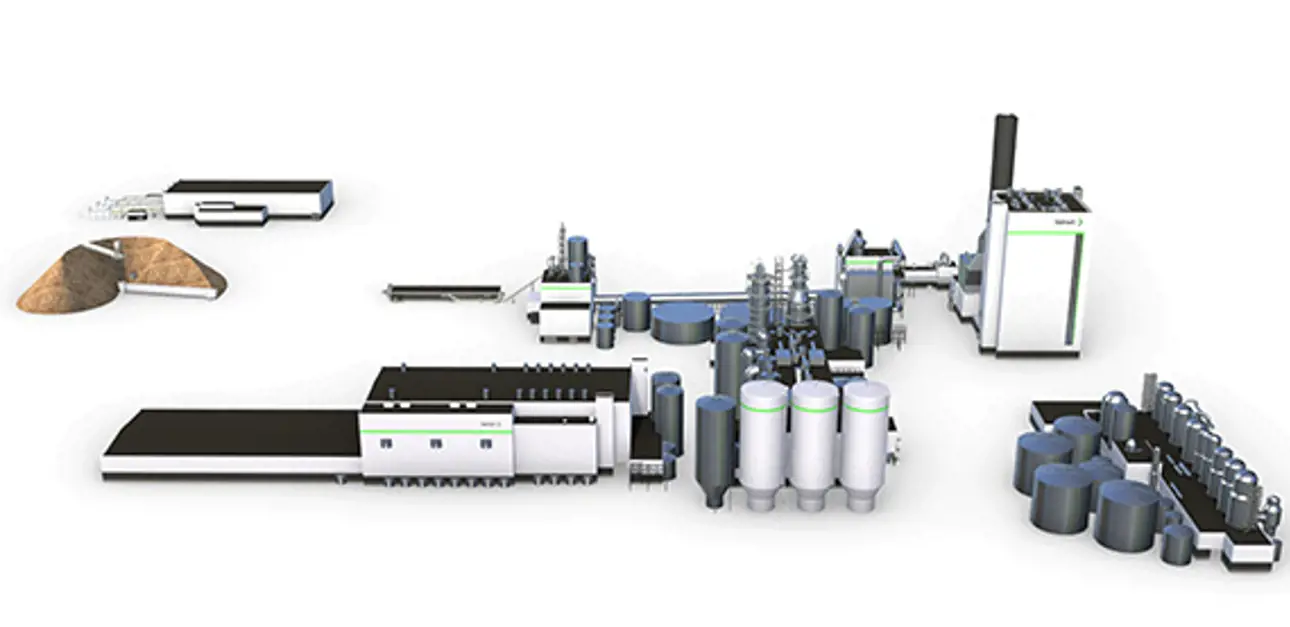Getting more from less in pulp production
Dec 21, 2021
Global megatrends are driving toward carbon neutrality, resource efficiency and circularity, thus increasing the demand for renewable materials. Already today the modern pulp mills meet most of the sustainability goals including carbon neutrality – but we can do more to meet the future needs.

“When I discuss with different customers about their pulp mill projects, different customers have different goals. But one thing everyone has in common, is the demand for more sustainable pulp production – no matter if we talk about a new pulp mill investment or improving the performance of an existing mills. Raw material and energy efficiency combined with circularity play a key role in more sustainable pulp production. Simply said the key is to get more from less,” tells Mats Nordgren, Senior Specialist for Pulp Mills at Valmet.

The environmental targets are in general tightening year by year and the local circumstances set additional requirements.
“Naturally everyone targets to produce high quality pulp with low operational costs. Additionally, companies have a truly comprehensive approach to sustainability with systematic targets on many levels. Emission to air and water are crucial everywhere. If access to water is limited, we need to put special focus on condensate utilization and water circulation. And if a mill is located close to habitation, the odor control becomes very important for a social license to operate.”
“We constantly collaborate and work together with our customers, our customers reality is our reality. To secure sustainable pulp production is a continuous process where you need to have a long-term mindset. Our experts perform regular analysis, inspections and condition assessments of the mill, the insights and recommendations might relate to processes, operations, maintenance or mechanical improvements which lead to optimized performance and maximized reliability,” says Robert Kölby, Senior Manager, Agreement and Lifecycle Concept Development at Valmet.

Energy efficient and fossil fuel free pulp mills are here already today
With systematic improvements in energy efficiency modern pulp mills are over self-sufficient when it comes to renewable energy production. Modern chemical pulp mills can produce all the steam they require with the recovery boiler. Power consumption has been decreased to about 500 kWh/adt. And with a high-power recovery boiler the power production can be twice the mill´s own consumption based on the recovery boiler only.
Energy efficiency is also improved with heat recovery and by optimizing the heat/steam balances between different process islands e.g., between cooking and evaporation. Improved energy efficiency means for example bark and other wood residues are no longer needed for steam and power production and can be used as lime kiln fuel.
“At chemical pulp mills, lime kilns have been the only place to use fossil fuels. We have two biomass-based fuel alternatives for lime kilns – biomass gasification and wood powder firing. These fossil-free lime kiln solutions make sense both economically and from emissions perspective. In the future, I don’t think there is any pulp mill that would use fossil fuels,” tells Martin Wimby, Director for Recovery Technology and R&D at Valmet.

Closing the circles
High energy efficiency combined with improved side stream utilization makes it possible to further close the chemical circles at the mill.
“Our customers have also pushed us to develop new solutions to reduce the environmental footprint of pulp mills. Metsä Fibre’s Kemi bioproduct mill is a comprehensive example of this. The mill’s water and air emissions are very low and, in many aspects, require technical solutions that go beyond the BAT (best available technology) levels,” Nordgren explains.
“For example, integrated sulfuric acid plant produces sulfuric acid from mills concentrated non-condensable gases (CNCG). The produced sulfuric acid can be used at bleach plant, for tall oil separation or for lignin extraction,” Wimby adds.
“Closing the circles means we can’t look at one department only as the chemical, water and energy flows are interlinked and changes in one department impacts the others – even with unexpected implications. For this, comprehensive knowledge of the whole mill process from fiber processing, chemical recovery and effluent treatment is needed,” Nordgren complements.

Taking the development of new mills to improve the performance of existing mills
The solutions developed for new mills can at least partly also be implemented at existing mills. With reasonably small investments we have possibilities to improve fiber quality, lower chemical consumption, lower emissions to air and water and reduce water consumption.
“By investing in improved washing, we can get better oxygen delignification and lower the chemical consumption. We can reduce NOx emissions by optimizing the burning, with investments in multi-level air staging or adding scrubber technology. Dust emissions can be reduced with new ESPs and odors by improved NCG collection and handling. Improvements in evaporation plant and condensate treatment replace the need for fresh-water usage. We have also changed existing lime kilns from fossil fuels to wood powder firing,” Nordgren explains.
“The possibilities for each mill need to be studied separately, taking into consideration the mill layout to understand what is technically and economically possible and feasible. We have sometimes seen that the obvious choices are not the right ones in the end from cost/benefit perspective,” Nordgren concludes.
Our shared target is to produce more with less. This means more high-quality pulp and new side stream products, with less raw materials, less water and zero waste.




